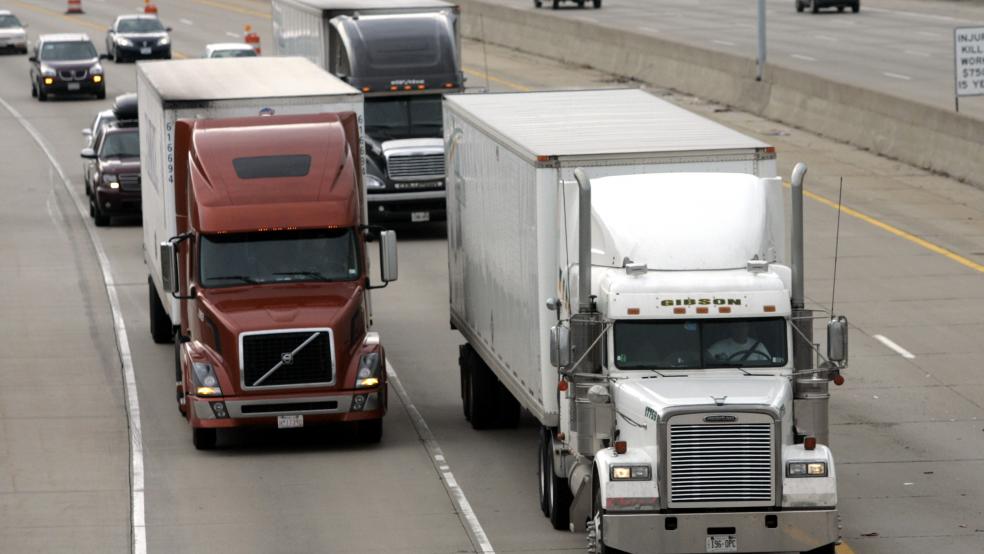When looking at oil demand, oil market analysts focus overwhelmingly on passenger vehicles. One of the hottest debates today is over the prospect of peak oil demand: whether or not electric vehicles along with general trends towards more fuel efficiency will ultimately lead to a peak and decline of total oil demand worldwide. No doubt the upcoming release of Tesla’s Model 3 will spark more than a few columns on how it could be the beginning of the end for oil.
But the conversation often overlooks the role that heavy trucks and freight play in driving demand. The International Energy Agency just published a report arguing that the world needs to get a handle on fuel efficiency for freight, or else oil demand will continue to rise, regardless of how many Tesla’s are on the road.
Related: Why OPEC's Production Cuts Haven't Boosted the Price of Oil
Freight transit is crucial for economic growth, and indeed, it tends to be correlated with GDP. The IEA says that only four countries – Canada, the U.S., China and Japan – have fuel efficiency standards for heavy trucks, one-tenth of the 40 countries that have rules for passenger vehicles.
“For far too long there has been a lack of policy focus on truck fuel efficiency. Given they are now the dominant driver of global oil demand, the issue can no longer be ignored if we are to meet our energy and environmental objectives” Dr. Fatih Birol, the IEA’s Executive Director, said in a press release.
Since 2000, heavy trucks have accounted for 40 percent of the total growth in oil demand, on par with the share for passenger vehicles. Trucks burn about 17 million barrels of oil per day (mb/d), or about one-fifth of total global demand.
Crucially, demand is still growing … rapidly. By 2040, road freight will be responsible for 5 mb/d of demand growth, or about 40 percent of total additional demand over that timeframe. If that occurs, any chance at putting a dent in global greenhouse gas emissions would be significantly undercut by the large increase in emissions from trucking.
Even in industrialized countries like the U.S. and Europe, where oil consumption in passenger vehicles has plateaued, the freight sector is still seeing increasing demand. But most of the growth will come from China and India, where 90 percent of the additional barrels for freight will be consumed.
Related: Why the Oil Markets Are Headed for a ‘Decade of Disorder’
The IEA urges governments to make progress on restraining demand growth. It cites three possible areas for improvement. The first area is logistics and operations, which means using things like GPS to “optimize truck routing,” improve supply chain efficiencies so that trucks are carrying heavier loads and making fewer empty trips. Big Data, the “internet of things,” and autonomous trucks fall into this category.
Second, there is plenty of room for hardware improvements. The IEA says that the trucking fleet could use aerodynamic retrofits to reduce drag. Lighter materials, better engines, transmissions and drivetrains can all boost fuel economy. There is also potential for hybrid and even zero-emissions trucks.
Third, there could be a large payoff from the use of alternative fuels, which encompasses biofuels, natural gas, electricity and even hydrogen.
If the sector adopts a range of these improvements, the IEA says it is possible to reduce oil demand by nearly 16 mb/d by 2050, relative to a business-as-usual scenario.
Some areas will be much more difficult to achieve than others, but the IEA says that governments need to focus on several areas: Fuel economy standards; support for the improved use of data for supply chain management; and policies to promote alternative fuels, including R&D, market uptake and refueling infrastructure.
Related: Why the Global Economy Isn't Even Close to Kicking Its Addiction to Oil
The conclusion from the report is that while everyone is (rightly) focused on passenger vehicles, where indeed, a lot of progress is being made, there is scant attention to freight transit.
The prospects of peak oil demand, at least for light-duty vehicles, is within reach. But unless there is an equivalent campaign for heavy-duty vehicles, crude oil demand could continue to grow for several more decades. That would be just fine for the oil industry, but for governments trying to reduce their oil consumption and make headway on climate change, the policy approach to the transportation sector needs to be much more comprehensive.
This article originally appeared on OilPrice.com: Read more from OilPrice.com:
Expert Commentary: Is an Oil Comeback in the Cards?




